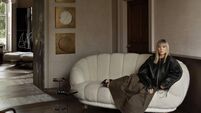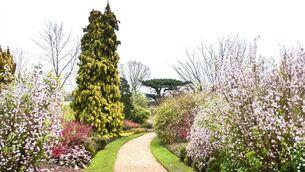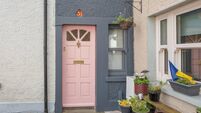Home of the brave: See this courageous RIAI Award short-listed Kerry home

There are two basic approaches when you’re looking for a family home — the first is easy, the second, less so. The most common approach (especially in urban areas), is to purchase new, or secondhand, according to your requirements.
The second, common in rural areas, is to build yourself. On paper, this may seem the cheaper, most cost-effective option — but it’s most certainly not. You need vision determination and nerves of steel to get a build project over the line.
Within the second approach, there is, again, an easy and hard way.
The easy way is to agree a build from aselection of plans from a reputable builder who then takes on all the work — from planning and drawings to the build, and more or less hands over the keys at the end. Easy, fixed-rate builds are relatively straightforward and you get an easy, fixed-plan house too.
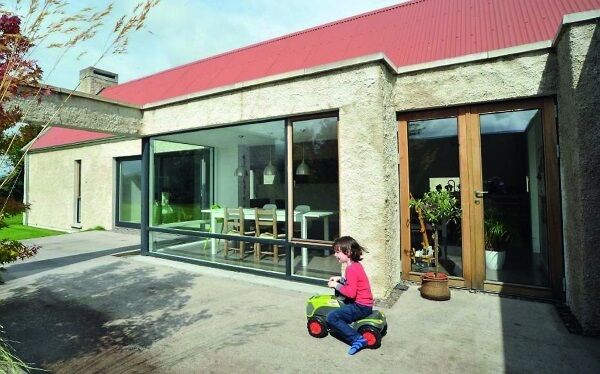
Now we get into the more complex area, where a couple has a vision of what they want and takes on an architect to help achieve it — a team effort, if you will.
This requires collaboration, consensus and again, determination on all three corners of the triangle and, if a house is any way different, it can be difficult to even get past the planning stage.
In the case of this RIAI Award-shortlisted home in Meanus, Killorglin, Co Kerry, the finished product was nearly six years in the making.
With a series of failed planning applications at one location, the couple changed tack and moved nearer home, to a fine, level site with panoramic views of the McGillycuddy Reeks and Carrauntoohil, in particular.
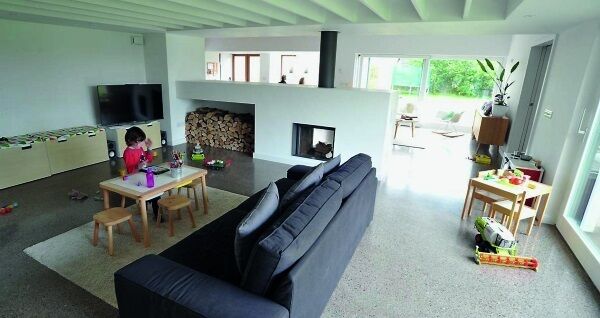
Meitheal Design Partners Architects was nominated for an RIAI award for this home at Meanus, Killorglin. The shape is simply, two interconnected single-storey cottages joined by a level, living space.
GET THE LOOK
- Open kitchen/living space:Hall table and Sugán chairs from Mary’s Antiques Shop, Upper Bridge St, Killorglin, Co Kerry; Eames Plastic Side Chairs DSW from Nest.co.uk, small grey/blue sofa and round coffee table from Made.com, oak sideboard and soft furnishings from Habitat.co.uk, Eames-style rocking chairs from Bluesuntree.co.uk
- Sitting room: Roland Piano from Thomann.de, floor lamp from Made.com
- Family room: Storage boxes, sofa and table & chairs all from Ikea.ie, large storage cupboard from Maryfrances’ Granny, Brio play kitchen set from amazon.co.uk
- Bedrooms: Bed, bed-side chest and green bookshelf all from Flexa.ie, toy storage from Ikea.ie, antique pine cupboard from Granny. Bed, wardrobe and chest of drawers all from Caseys.ie
- Paint: Sitting room in Farrow & Ball Off-black and other rooms, Strong White by F&B
Aficionados of every house magazine, home-build and telly show out there, they went through a series ofdesign ideas during that six-year stint in the bureaucratic trenches.
The refusals, delays, and a shift to a new site were, however, worth it in the end, they say, because they honed their design style, pared back their ambitions, and ended up with a house they truly wanted.
“We had no issue with planning here,” says Maryfrances Thompson, “It sailed through — not a peep.”
“We had loads of time to get it right and pare it back,” says her husband, Paudi Moriarty, “it was a different budget altogether in 2013 and trying to get a mortgage was very difficult.”
But get a mortgage they did, and the build, started in January 2013, was finished in an astonishing 20 weeks.
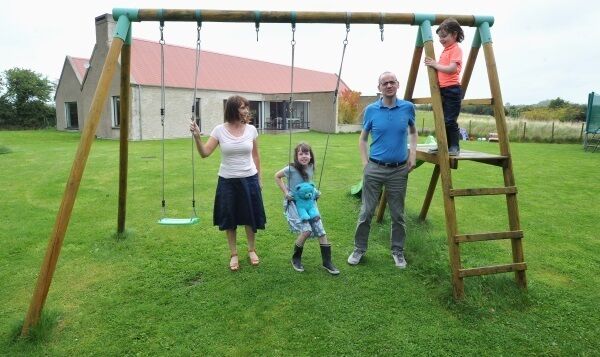
“We kept our architect, Mark Dignam, (Meitheal Partners Architects), on for the full contract and he updated us regularly and if anything came up, he was there. A lot of things were done on-site as the build went up,” says Maryfrances.
“We had watched Grand Designs for years and three pieces of advice always came up — ‘don’t change the plans’, ‘you will go over budget’, but ‘it will be worth it in the end’.”
The couple agrees. But, by the sound of their experience, it was an easy build. The team were good, the architect was better and they’ve moved into the bosom of their family.
“It’s enriched our lives to have family and good friends around us and we’ve got to know, and become good friends with our architect — great friends.” The main contractor was KLM Kenmare: “Mark worked with them before and they were great — so good.”
“In January 2013, the industry was still in the doldrums and the Part L regulations had come in and the architect and the builder had their roles —
and the builder always knew what to do,” says Paudi. “He had a great sense of what was right and went the extra mile without being asked — if there was something to be done that wasn’t specced, they just did it.”
“I had the impression it would be very difficult,” says Maryfrances, “but they were so nice — they were really approachable and accommodating, all the subcontractors.
“And they all grew to love the build. It’s not something you see day to day in their work — it’s different.”
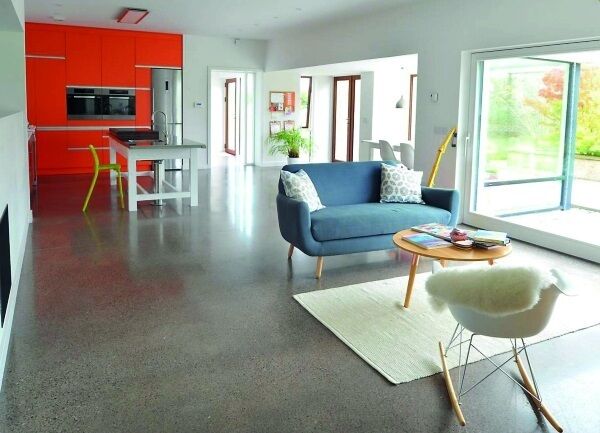
It most certainly is, but at the same time, it’s very familiar. This red-roofed, rough-dashed long house is deceptive on approach.
The full extent of the 2,700 square foot house is not obvious at all.
In fact, the linear mass of the main building is broken up by the clever use of a stormwall quarter-ways down the facade, and the prompt to the past continues with an integratedgarage with sliding corrugated doors on galvanised sliding hinges — all very old school.
But it’s not a pastiche, hippy-dippy, farmhouse — not at all, and you get that straight away, along with the deftness of the references, (but to be fair, the red roof is a fairly standout element in this land of the dormer bungalow).
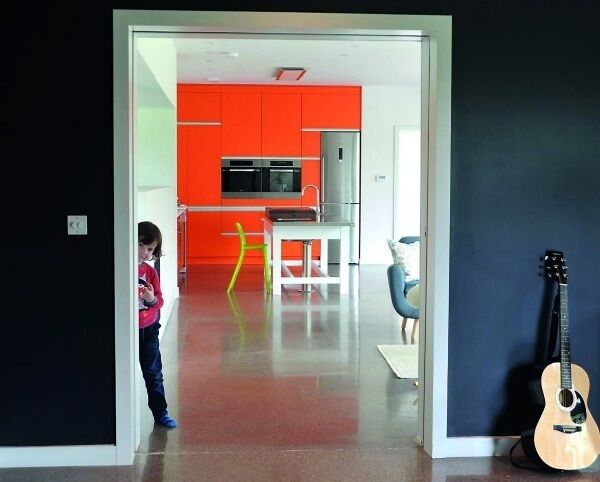
And that’s just the outside view. Once you go inside, the subtleties continue. There’s no grand look-at-me hallway, just a simple short corridor, furnished with an old pine table and a bunch of Montbretia in a vase.
But wait, the orange flower is a hint of what’s to come — a blazing, showstopper kitchen in Traffic Light Orange sprayed onto the body of the doors using a Pantone shade, by a panel beater, no less.
There’s a full wall bookending the massive open-plan space, and punching through the calm of white walls and tasteful furniture with a sense of fun and, what’s more, élan.
Fitted asymmetrically by a local cabinet maker — this is no run-of-the-mill kitchen — open up the doors and inside you find sublime joinery in plywood — not a whiff of MDF in sight.
But best of all is the kitchen island, designed by Mark. Again, harking back to the old deal table, this is a simple, four-legged structure, with a cross band, but topped with a fully integrated steel worktop and sink — fitting the entire 10m by 1.2m island.
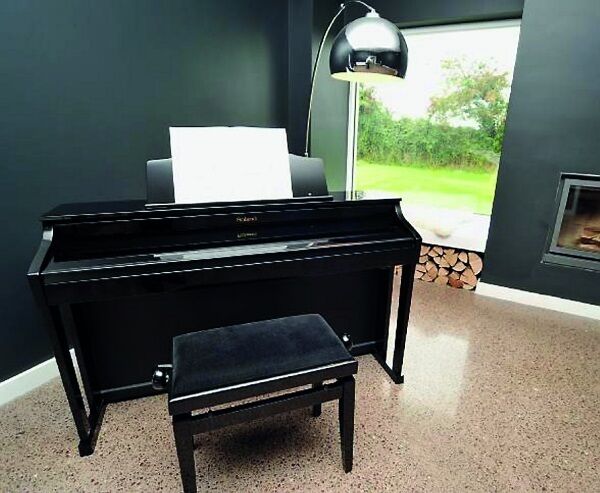
A lump of teak raises the level for an induction hob and, on the other side, what looks like a teak apron pulls out to reveal a perfect breakfast bar. Design beyond the ordinary, certainly.
There is one other standout element in this house, though, and that has to be the polished floor — it’s a superb job, not because it is what it is, but rather because of the level of finish. It’s flawless — not an expansion or cold-bridging crack anywhere.
A smooth, run of silken concrete without a single blemish. Someone must have mathematically worked out the maximum area covered without stress and took it from there.
Joints are perfectly finished — obvious, but beautifully done, and the concrete is seeded in local gravel and finished to a perfect, satin finish. Work like this deserves a gallery.
As can be seen from the images, the house is open-plan, divided only by a massive, breast-height wall.
This means that when you sit down in any area of the T-shaped space, your view is occluded and there’s the sense of enclosure, but with space overhead allowing light to flow everywhere.
Ceilings are extra high — the plan, simply, is two single-story cottages running parallel, with a connecting, flat-roofed living space in between.
The kitchen, dining and living room form the flat of the T and the connecting living/ playroom forms the leg.
The second ‘cottage’, forms the bedroom block, and has a subtly open-plan approach from two sides. The master bedroom takes up one wing and faces west towards Carrauntoohil, (such views), with two bedrooms on the other side.
All rooms are en suite, and one of the childrens’ rooms has a mezzanine space in preparation for the teenage years.
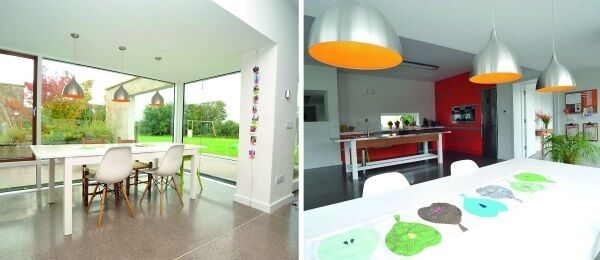
The magic joiner went to work here too and each en suite has a teak, wall-mounted unit supporting basin and tap. Doors are Traffic Light Orange again, another unexpected, but pleasant surprise in all the serenity..
The Moriartys deliberately pared back the number of bedrooms to give more living space and to stay within a swing of their budget.
They managed it, but also felt they didn’t need inordinate amounts of bedrooms — the money was put into other, more importantelements. It takes courage to spend big money on relatively small things, but in the end, it shows.
Oh how it shows.
THE SUPPLIERS
“We took a very simple approach to thelandscaping. All excavated material was used to create mounds to screen neighbouring sites and to provide a natural visual boundary between the public face of the house andthe private areas. Screen walls were alsoprojected into the mounds to reinforce this approach. The simple natural feel of the grassed mounds was a contrast to therigidness of the polished concrete terrace areas and the projecting walls.” — Mark Dignam
- Architect: Meitheal Design Partners Architects, (formerly PLM)
- Structural engineer: Patrick Murphy BE CEng MIEI Engineering and Construction Services Ltd
- QS: Abacus Cost Consultants
- Main contractor: KPH Construction; kph.ie
- Electrical: Micheál Healy Electrical
- Plumbing: Flor O’Sullivan Heating and Plumbing Contractor.
- Flooring: Martin Cremin Cutsue Ltd,www.cutsue.ie
- Joinery/ Kitchen: Holbein Carpentry & Joinery holbeinjoinery.com
- Bathroom suppliers: Ideal Standard Sanitary Ware from MD O’Shea,
- Stoves: Stuv Stoves from Murphy Heating,Kinvara, Co Galway murphyheating.com
- Stainless Steel Countertop; Cork Bar andCatering Ltd
- Tegral Sinusoidal Roof Cladding: Patrick Lynch Roof Cladding, patricklynchroofcladding.com
- Glazing suppliers: Carlson Windows & Doors at carlson.ie



